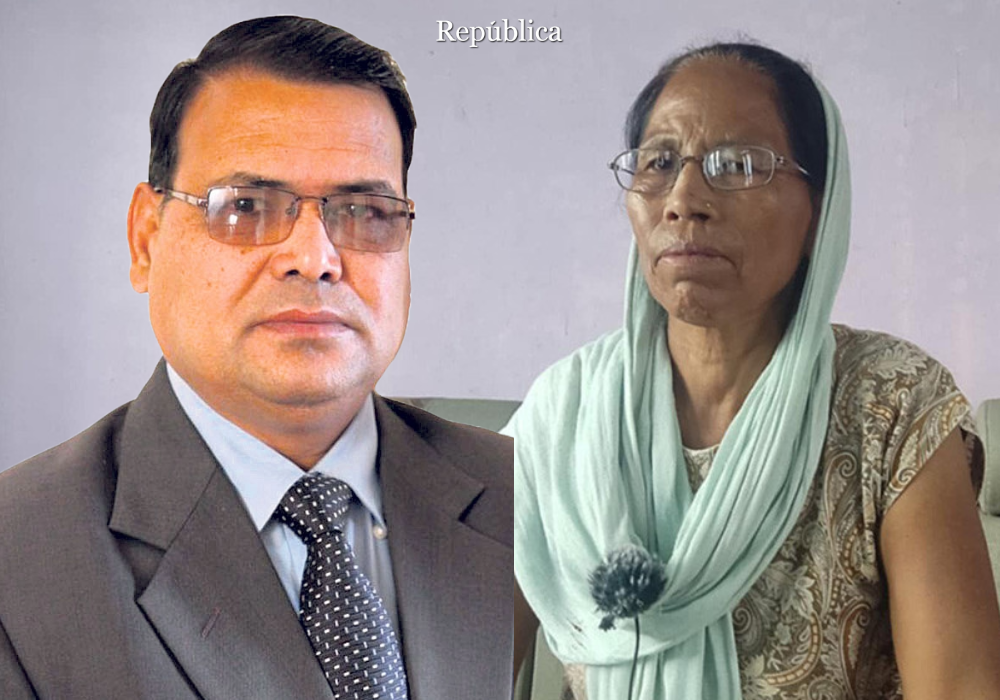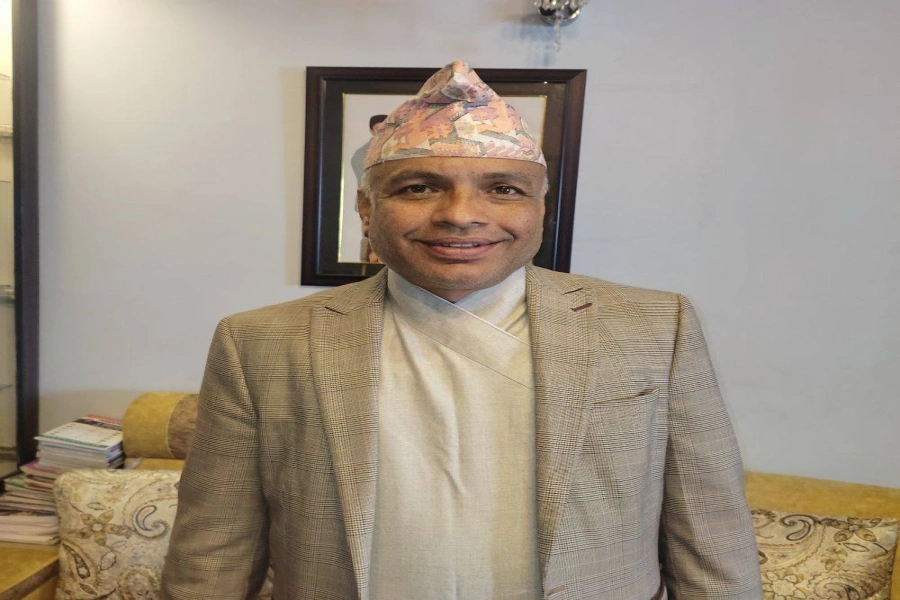Kinship is one of the cornerstones of anthropology. Documenting genealogies and family trees has always been part of anthropological fieldwork, developing their own terms and terminologies, or what Bronislaw Malinowski called ‘kinship algebra and geometry’. But for many anthropologists today kinship is bracketed within antiquarian studies. As for Nepal, kinship is related to the building of our society and therefore warrants comprehensive study. Nepali society is dominated by kin relationship—manifested not just in marriage but also in our everyday interaction with non-relatives.
We refer to natagota where nata refers to the extension of family membership while gota is a derivation of gotra belonging to the lineage of Saptarishi (seven sages). However, the term would only cater to kin networks within the Hindu fold.
Kinship—built either through bloodlines (consaguinal) or marriage (affinal)—is not only confined to determining your immediate kin. It is also basis of political alliances and of economic influence. This institution has historic function in South Asia as it impinges on every aspect of society. But there are hardly any noteworthy works focusing on kinship in Nepal. Therefore, Kinship Studies in Nepali Anthropology published by the Central Department of Anthropology (CDA) of Tribhuvan University is a major contribution. The book brings together 13 research articles focusing on different facets of kinship among the Bahun-Chhetris in adjoining areas of Kathmandu valley, the Mushars of Eastern Tarai, the Gurungs of Western Nepal, and kinship between Dalits and non-Dalits in the Far West.
The first of its kind book, right at the outset, highlights the dearth of research and publications in kinship in Nepal and encompasses knowledge spanning sixty years. Given the limitation of space, the reviewers will pick select chapters.
‘Revisiting Kinship Studies in Nepali Anthropology: A Critique and a Proposal’ by Laya Prasad Uprety provides a historical overview of anthropologically produced write-ups on the theme produced by both foreign and Nepali scholars. In charting out these works he quickly enters a debate on the neglected areas of Nepali anthropology and tardy attempts of native scholars. A comparative analysis on writing produced by Nepali and foreign scholars would have been handy here. Dilli Ram Dahal in his essay ‘Kinship Structure in Nepali Society: Reexamination of the Unilineal Descent System’ discusses the structure of Kinship within the patrilineal descent and argues ‘the Nepali model of lineality has more adaptive mechanisms to fulfill the social and economic needs of the concerned groups per se than the concept of purity in the sense of biological fatherhood’.
On the issue of whether kinship is biological or cultural, Ram Chhetri in ‘Not my Relative!’ deals with the issue of kinship and relatedness among the Lobas of Lo Manthang in Northern Mustang. This cultural group practices both patrilateral and matrilateral cross-cousin marriage. Another article by Binod Pokharel and Uma Bhandari characterizes territorial marriage between the Bahun-Chhetri of Kanth. The outskirts of Kathmandu are derogatorily refereed as Kanth and city denizens refer to the people there as Kanthe. According to the authors, the Bahun-Chhetris of Kanth maintain patrinileal kinship by marrying within the Kanth (wife taking as well as wife giving) and consider the non-Kanth or permanent urban dwellers as outsiders. The article points to the underlining tension between kanthe and sahariya and brings to fore territorial hierarchical relationships in Kathmandu valley.
Janak Rai’s ethnographic study titled ‘Dhimal-Limbu Daju Bhai: Inter-Ethnic Kinship, Place-Making and Indigenous Activism in the Eastern Nepal’ explores the myth-making nature of Kirati identity in Eastern Tarai. There, inter-ethnic kinship between Dhimal, Rai and Limbu is stimulated by the kinship notion of daju-bhai that is also used in political mobilization of Limbuwan in Nepal. Prakash Upadhaya in his article ‘Syaisyai as an Institution for Creating Solidarity: Death Rite Passage and Kin Roles in the Gurung Community’ inquires into the roles and functions of kinship thorough Gurung death rituals, which informs everyday living of the Gurung society.
Can untouchables be a Mit of the upper caste? A joint article by Suresh Dhakal and Nabin Rawal ‘Mit Relation in Far West: Ritual, Reciprocity and Reproduction of Social Relationship’ explores the ritual of Mit laune between the Thakuri, Chetri and Brahmins on one hand and Dalits on the other in Far West Nepal. This article makes one rethink caste relationships and question the binary lens of pure and impure.
Similarly, ‘Conversion to Christianity and Changing Kinship Practice among the Santhal People in the Eastern Tarai, Nepal’ by Lagan Rai looks into the undercurrents of the complex dynamic between kin members of different faiths. Rai portrays the tension between family members while performing certain rituals when the converted members refuse to participate. He points out that such refusal indicates rupture in the Santhal kin network.
Even though the attempt to portray kin network is worthy, there are certain lacunas in the book. For instance the chapter on Kanth doesn’t take into account the rapid changes in the area. There are plenty of cases of marriage between Kanthe and non-Kanthe. Also the fact that the boom in land prices has changed the political economy of Kanth needs to be considered.
As for Prof Dahal, he doesn’t seem to account for the changing caste structures, in particular the change in commensual rules. The change is also contingent on time and space—urban/rural, modern/traditional. Another assumption of Dahal, that ancestral deities are only male, calls for reexamination as there are many female ancestral deities. The shakti cult also offers a counterexample.
Another aspect of the book that calls for critique is the theoretical assumptions and analytical frameworks within which Nepali kinship is understood. The overwhelming focus on British structural functionalism is a matter of concern. While this may have its utility, they are inadequate to capture Nepali reality. For instance, the kinship between Dalit and non-Dalit cannot be explained by exiting frameworks. Also, the term ‘fictive kinship’ may not apply in our case as Mit baa enjoys similar respect to biological father and in case of the former’s death, you have to mourn him. Another point in affinal kinship is that Nepalis (particularly the Hindus) check seven generation of lineage on father’s side and five on mother’s before agreeing to marriage. We need to look at the affinal kinship with these realities in mind.
The areas explored within kinship studies are also important. As Prof Upreti suggests, new avenues need to be explored which include notion of kinship and new reproductive technologies. Also, the notion of adopted families must be explored. While the idea of adoption is not new in Nepali context—given that extended families have been adopting kin of deceased members—the transnational adoption process brings to light new avenues of kinship. An important dimension of kinship studies could be the role of law in defining social institutions.
Finally, it cannot be overemphasized that anthropologists need to bring an inter-disciplinary approach to kinship studies. There have been studies by historians such as Baburam Acharya in this field, which demands attention. Anthropologists such as Purna Prakash Nepal (Yatri) have also contributed to kinship studies and their works could have been incorporated. The development sector, in the reckoning of the likes of Prof Upreti and Prof Chhetri, might have appropriated anthropologists working in Nepal. But that surely cannot be an excuse for underdevelopment of kinship studies.
The authors are assistant professors at Kathmandu School of Law
Khadka fails to establish kinship with judge in Nepal Republica...



































